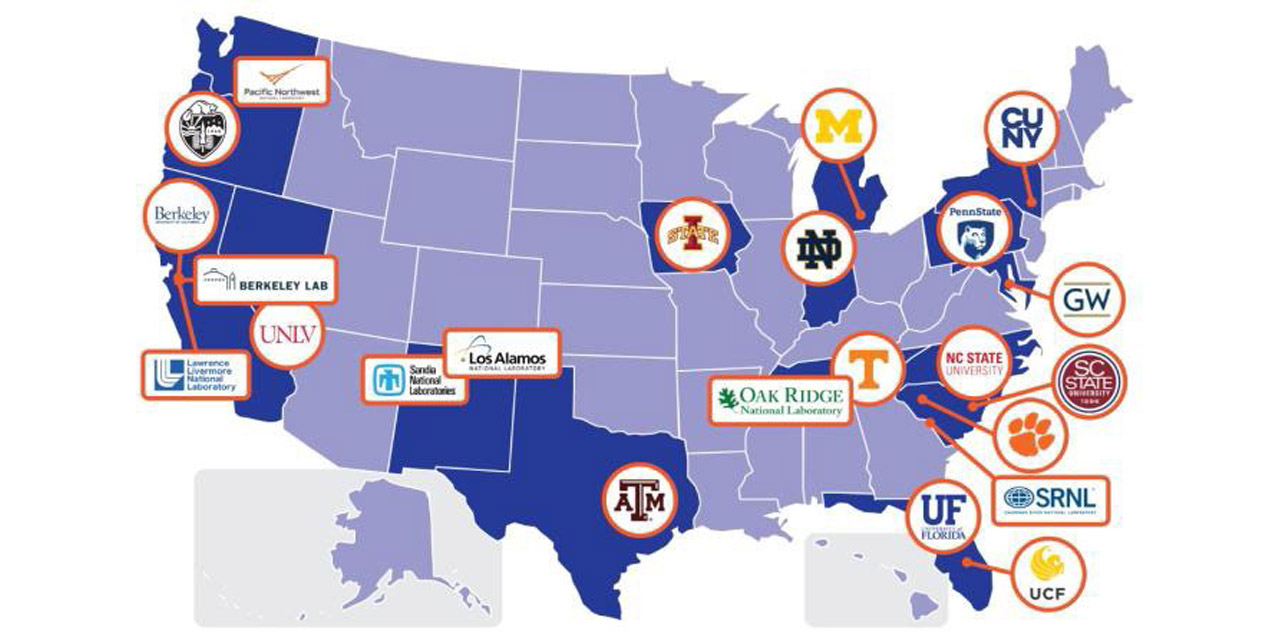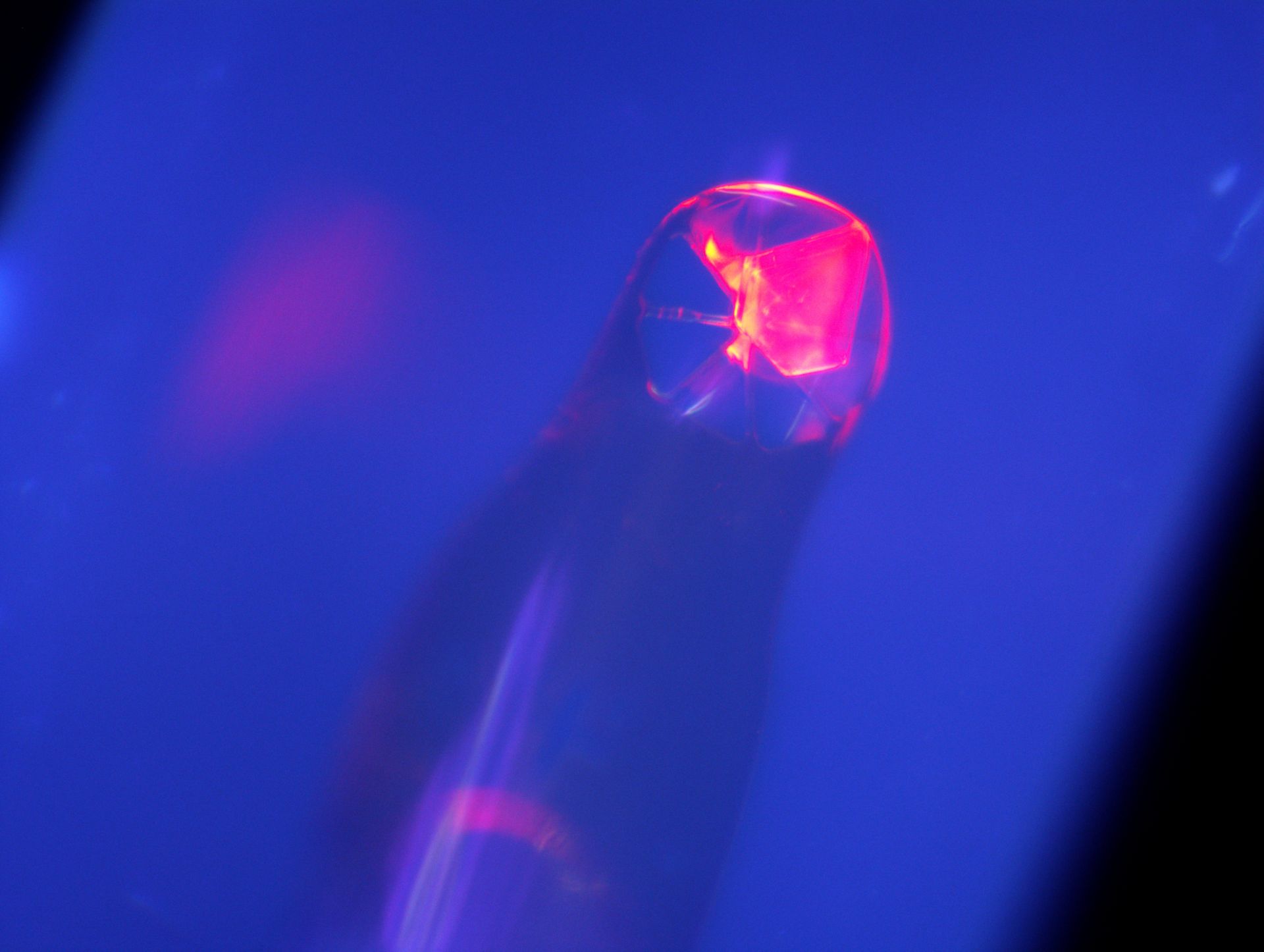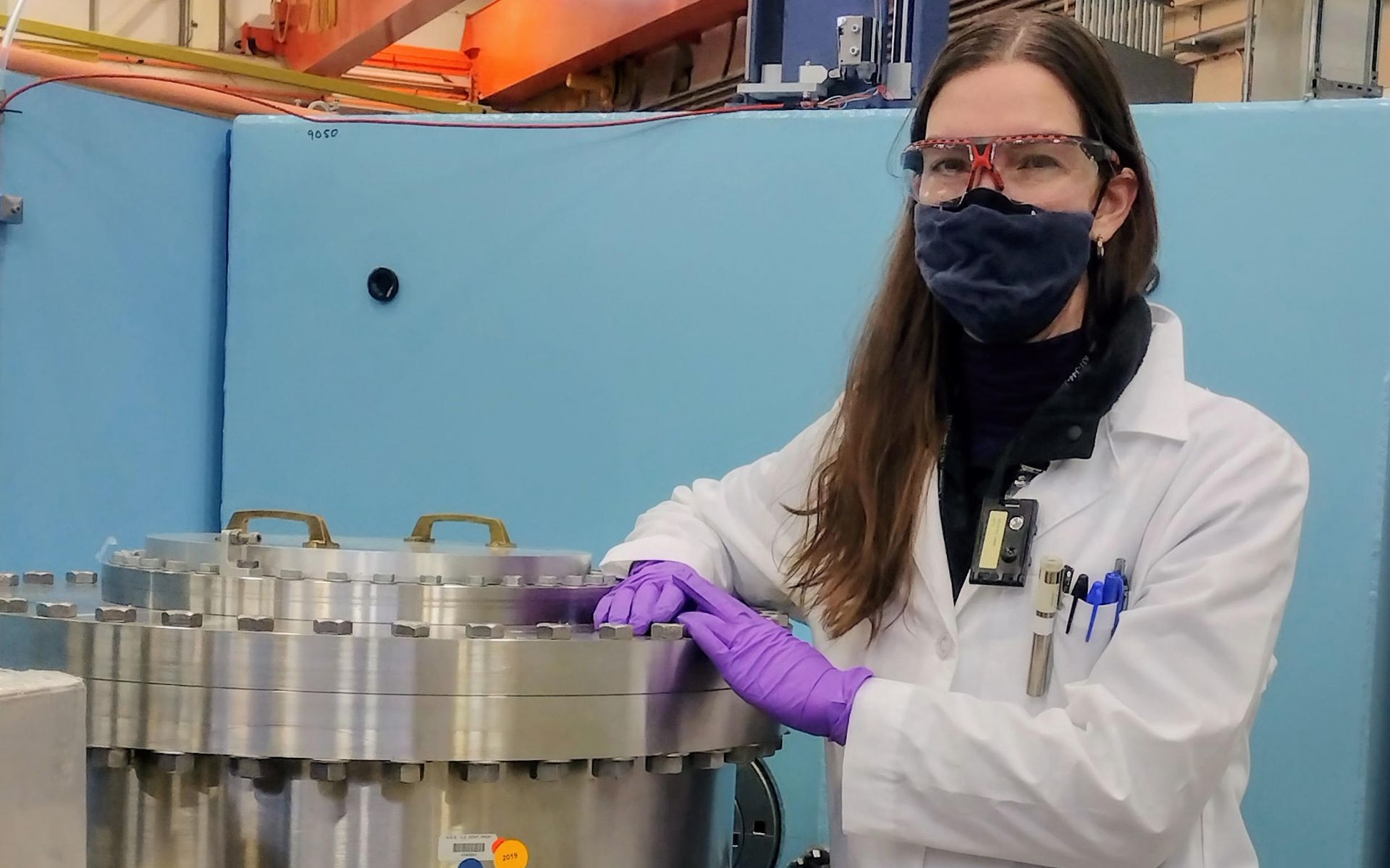Members of the Consortium for Nuclear Forensics. (Image: University of Florida)
A 16-university team of 31 scientists and engineers, under the title Consortium for Nuclear Forensics and led by the University of Florida, has been selected by the Department of Energy’s National Nuclear Security Administration (NNSA) to develop the next generation of new technologies and insights in nuclear forensics.
A new compound of curium photographed at LLNL during crystallography experiments. Crystals of this curium compound are uncolored under ambient light but glow an intense pink-red when exposed to ultraviolet light. (Image: LLNL/Deblonde)
Scientists at Lawrence Livermore National Laboratory and Oregon State University (OSU) have developed a promising new method to isolate and study some of the rarest elements on Earth. Focused first on curium, they have identified three new complexes containing curium ions and revealed the molecules’ 3D structures, as well as previously unknown features.
Jamie Weaver with the neutron depth profiling instrument. (Photo: T. Barvitskie/NIST)
The newest generation of lithium-ion batteries now being developed uses thin-film, solid-state technology and could soon safely power cell phones, electric vehicles, laptops, and other devices. However, like all batteries, solid-state lithium-ion batteries have a drawback: Impedance—electrical resistance—can build up as batteries are discharged and recharged, limiting the flow of electric current.




